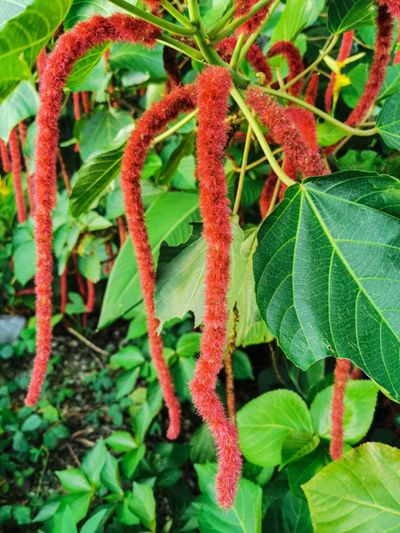Finely cut foliage and long, fuzzy flowers may spread along the ground or cascade over the sides of a hanging basket. Some types of growing chenille plants take on a shrub form. Commonly known as red hot cattails or fox tail (Acalypha hispida), you are likely to find a variety suitable for your summer garden and beyond. Caring for chenille red hot cattails is simple in USDA plant hardiness zones 9 and 10, where plants grow abundantly all year long. In colder areas, growing chenille plants outside perform as annuals and die out with frost.
How to Grow a Red Hot Cattail
Chenille plant info advises a full sun location for this interesting plant, except in warmer zones where protection from the hottest afternoon sun is advisable. You may also want to wear gloves when caring for chenille red hot cattails, as the sap may cause irritation. Though only mildly toxic, all parts of growing chenille plants are poisonous. Keep this in mind when locating the plant in your landscape and place it in an area where children and pets are not likely to be enticed by the fuzzy, red tails. Properly caring for chenille red hot cattails begins with planting in a well-draining soil. Learning how to grow a red hot cattail also involves regular watering, as the plant may be lost if allowed to dry out. Soil that is consistently moist produces optimum growth and development of the 18 inch (46 cm.) long red tails. Weekly fertilization, using a houseplant food mixed at half strength is an important part of caring for chenille red hot cattails. Stop fertilization during winter months when growth slows.
Additional Chenille Plant Info
Regular trimming of both foliage and flowers is part of caring for chenille red hot cattails as well. Remove spent blooms and leggy foliage for a continued display from your growing chenille plants. When used as a groundcover in suitable climates, keeping the specimen within its bounds may be the major effort in its care. The thickly spreading foliage may be trimmed back to curtail its spread to unwanted parts of the garden. If bringing a potted specimen indoors to overwinter, clip the entire plant back by one third. Growing chenille plants need those few months of dormancy. Move the plant outside when temperatures warm, gradually increasing the amount of sunlight it receives.
